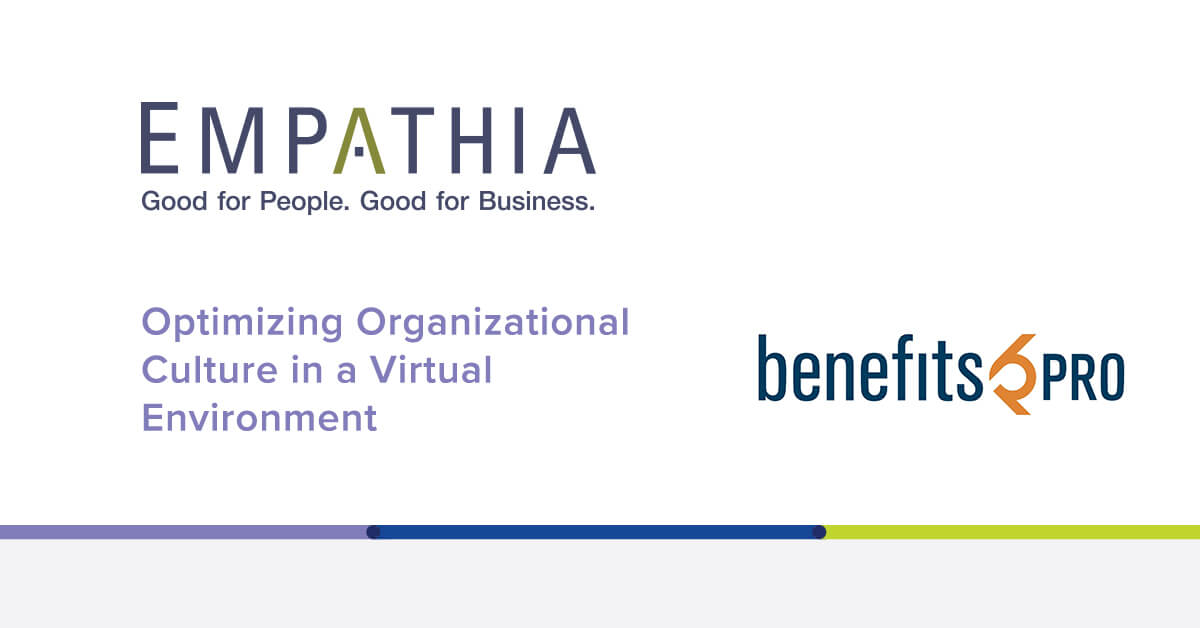Empathia’s article has recently been featured in BenefitsPRO Magazine.
Optimizing Organizational Culture in a Virtual Environment
Even before the onset of the COVID-19 pandemic, the number of remote workers was steadily increasing. In 2018, Forbes Magazine predicted that, in a matter of a few years, up to 50 percent of U.S. employees would be working from home. However, the pandemic has accelerated that trend dramatically and rapidly. In January 2020, about 7 million employees worked primarily from home, reflecting a 44 percent increase over the preceding five years. Since then, the number of new remote staff created by the pandemic is a moving target, but a recent Gallup survey indicated up to two-thirds of the American workforce is now engaged in some variation on work-from-home.
These trends are significantly impacting workplace culture. While some organizations are already ahead of the game in managing a remote workforce, having done so for years, others are playing catch-up. How does an enterprise that relied primarily on in-person interactions and operations as part of its business model suddenly pivot to work-from-home processes without negatively affecting employee morale and engagement?





